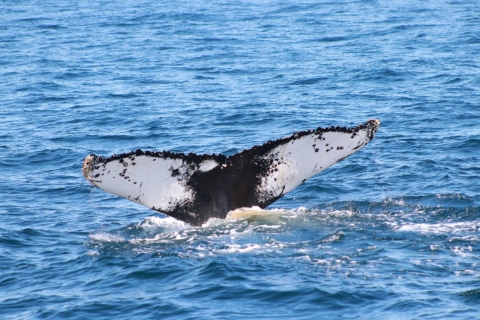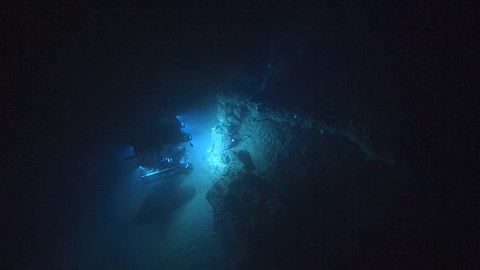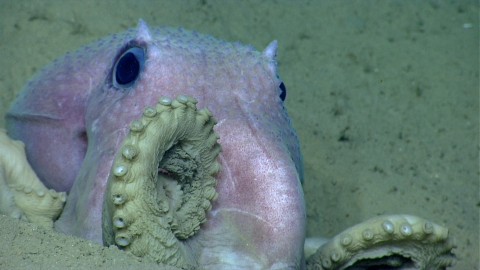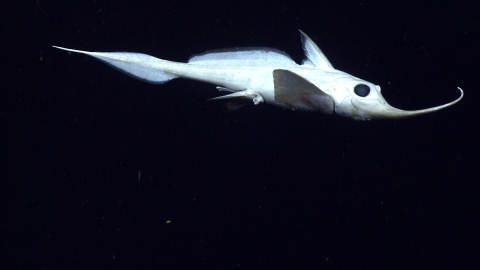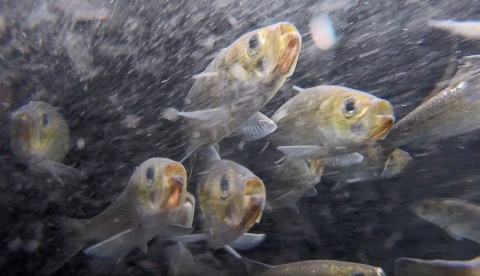Did you know there’s a national treasure in your backyard?
A mere 130 miles southeast of Cape Cod, Massachusetts, lies the Northeast Canyons and Seamounts Marine National Monument. One of just five marine national monuments — and the only one off the U.S. mainland — it protects an area of open ocean roughly the size of Connecticut.
The canyons unit includes three undersea canyons — one deeper than the Grand Canyon — at the edge of the continental shelf. Farther out, the seamounts unit has four underwater mountains, one taller than any east of the Rockies.
The U.S. Fish and Wildlife Service and the National Oceanic and Atmospheric Administration co-manage the monument. Superintendent Brittany Petersen agreed to answer my questions about this mysterious and fascinating place.
How did these underwater canyons and mountains come to be?
The seamounts are part of a chain of ancient volcanic mountains. Bear Seamount is the oldest in the chain, formed more than 100 million years ago. It’s also the tallest, at nearly 7,000 feet!
During the last glacial period, a layer of ice one mile thick blanketed what’s now New England. Because much of the ocean’s water was locked up in the glacier, sea level was lower, and Georges Bank — part of the continental shelf that is now submerged — lay exposed.
Erosion carved chasms in the island’s cliffs. One of those canyons — Oceanographer — is more than 6,500 feet deep and now lies within the monument.
What types of wildlife are found there?
Cold water rising from the depths of the monument bring nutrients that attract abundant populations of plankton, krill, forage fish, and squid. These prey animals, in turn, draw an amazing variety of species, including whales, dolphins, octopuses, and sea turtles. Atlantic puffins spend the winter there, bobbing on the water’s surface and diving for fish.
Scientists from the New England Aquarium found one of the highest concentrations of whales and dolphins ever spotted in the Atlantic within the monument. Four species of sea turtles — green, Kemp’s ridley, leatherback, and loggerhead — summer there.
Deep-sea corals, sponges, and anemones live side by side in the canyons and on the seamounts. Unlike their tropical cousins, these corals grow tall and thin due to lack of sunlight, creating a coral forest under the sea. They provide food, shelter from predators, and breeding, spawning, and nursery habitat for many other creatures.
It sounds far away, and I may never visit this place; why should I care about it?
The monument may seem far away, but it’s no more distant from Cape Cod than the New York border is from Boston. In fact, in a sense, it’s in the East Coast’s backyard! What happens there affects the mainland, and vice versa.
The unique geological features of the monument produce a nutrient richness that is unparalleled in the Atlantic, providing sustenance for myriad species. We enjoy some of these — think lobster and tuna — on our plates.
The whales enjoyed by thousands of people on viewing expeditions each year and the fish caught on charter boats feed there.
The same wildlife that use our rivers and coasts rely on the monument. Migratory fish species, like river herring and shad, spend part of their lives in inland waterways and part in open ocean like the monument.
The monument is a scientific cornucopia. We know more about planets millions of miles away than we do about what’s just offshore. Possible discoveries boggle the mind:
- The defense mechanisms of deep-sea corals may one day guide doctors in treating cancer, Alzheimer’s disease, and bone-graft patients. What other medical advances await?
- Since the monument is a product of sea-level rise, what can it teach us about facing the challenges of climate change climate change
Climate change includes both global warming driven by human-induced emissions of greenhouse gases and the resulting large-scale shifts in weather patterns. Though there have been previous periods of climatic change, since the mid-20th century humans have had an unprecedented impact on Earth's climate system and caused change on a global scale.
Learn more about climate change ? - Surprised fishermen have pulled Pleistocene fossils — including mastodon and mammoth — in their nets while near the monument. Could prehistoric human remains be next?
- We’ve identified only about 50% of the monument’s creatures, including the Bermuda storm-petrel, which not long ago was thought to be extinct.
How can I visit?
To reach the monument, you’ll obviously need a boat. Charter companies offer fishing and whale-watching trips from Boston and Cape Cod.
Because it’s hard to bring people to the monument, we’re creating ways to bring the monument to people through partnerships with organizations like Mystic Aquarium in Connecticut. A new, immersive exhibit at the aquarium lets visitors experience the magnificence and mystery of the monument.
Of course, any day of the year you can visit the Northeast Canyons and Seamounts Marine Monument page for more information and photos!



